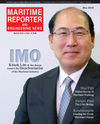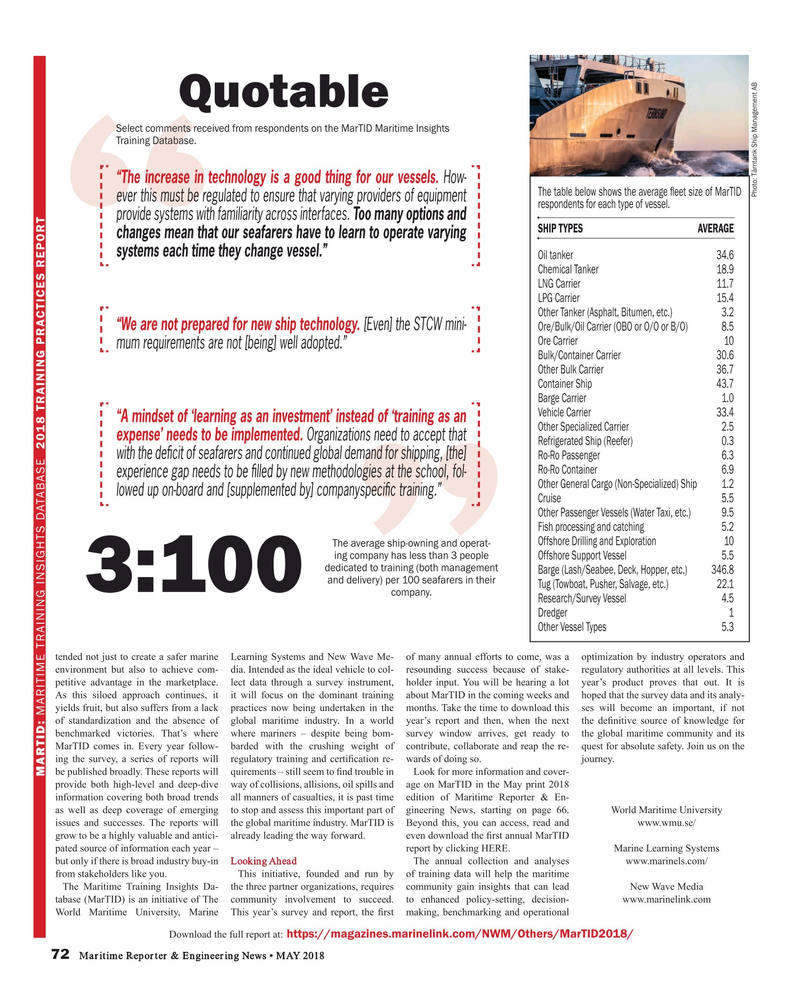
Page 72: of Maritime Reporter Magazine (May 2018)
Marine Propulsion Edition
Read this page in Pdf, Flash or Html5 edition of May 2018 Maritime Reporter Magazine
Quotable
Select comments received from respondents on the MarTID Maritime Insights
Training Database.
“The increase in technology is a good thing for our vessels. How-
The table below shows the average ? eet size of MarTID
Photo: Tärntank Ship Management AB ever this must be regulated to ensure that varying providers of equipment respondents for each type of vessel.
provide systems with familiarity across interfaces. Too many options and
SHIP TYPES AVERAGE changes mean that our seafarers have to learn to operate varying systems each time they change vessel.”
Oil tanker 34.6
Chemical Tanker 18.9
LNG Carrier 11.7
LPG Carrier 15.4
Other Tanker (Asphalt, Bitumen, etc.) 3.2 “We are not prepared for new ship technology. [Even] the STCW mini-
Ore/Bulk/Oil Carrier (OBO or O/O or B/O) 8.5
Ore Carrier 10 mum requirements are not [being] well adopted.”
Bulk/Container Carrier 30.6
Other Bulk Carrier 36.7
Container Ship 43.7
Barge Carrier 1.0
Vehicle Carrier 33.4 “A mindset of ‘learning as an investment’ instead of ‘training as an “ ”
Other Specialized Carrier 2.5 expense’ needs to be implemented. Or ganizations need to accept that
Refrigerated Ship (Reefer) 0.3 with the de

 71
71

 73
73
